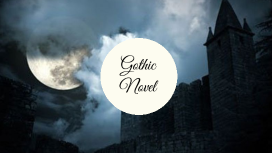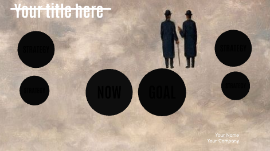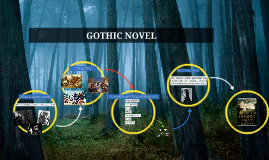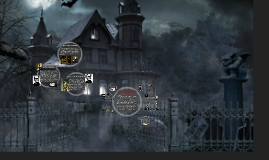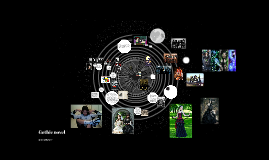Gothic Novel
Transcript: Symbolism: Often, supernatural elements convey hidden terrors contained in human nature. The A is the supernatural symbol that appears out of nowhere. "On a field, sable, the letter A, gules." *Gules~Tincture with the color red. *Tincture~Plant/Animal extract dissolved in ethanol. By Harli, Amber, and Timothy The Elements How His Life Affected His Work About Nathaniel The Scarlet Letter is a Gothic Novel written by Nathaniel Hawthorne Emphasis on Doomed Romance: Romantic themes used in Gothic Novels are lined by passion, sorrow, and tragedy. "We have wronged each other." The Elements Hawthorne grew up in an extremely religious environment. Several of his ancestors were involved in the Salem Witch Trials. He loved writing on Puritan Society, sin, and religious issues of the time. The Elements Gothic Novel Fascination With the Past: The Scarlet Letter was written during the Romantic Era of American History. Hawthorne created the setting 200 years earlier during the Puritan era. He blended the theme of the current era so that the book is classified as an American Romantic literature "With his own ghostly had, the obscurely seen but magestic figure had imparted to me the scarlet symbol, and the litter roll of explanatory manuscript. The Gothic Hero: Gothic literature popularized the anti-hero, a flawed protagonist who incorporates dark or monstrous elements. For example, Dimmesdale is the Gothic Hero. "May God forgive thee,' said the minister. 'Thou, too, hast deeply sinned!" The Elements Repeated Use Of Motifs: Many examples of gothic literature contain similar motifs, or devices that convey a thematic impact. The motif Doppelganger, characters that reflect the duality of human nature, appears notably in Stevenson's Dr. Jekyll and Mr. Hyde. The dream motif, in which dream sequences can convey the subconcious, also features in gothic literature. "As if there were a withering spell in the sad letter, her beauty, the warmth and richness of her womanhood, departed, like fading sunshine; and a gray shadow seemed to fall across here." "Love.....must always create sunshine, filling the heart so full of radiance, that it overflows upon the outward world." The Scarlet Letter is the seven year long adultery story of Hester Prynne, Arthur Dimmesdale, and Pearl Prynne. Born in 1804, Nathaniel Hawthorne was an American novelist, dark romantic, and short story writer. He was the son of Nathaniel Hathorne, and Elizabeth Clarke Manning Hathorne. Hawthorne added the "W" to his name after college to no associate with his ancestors wrong doings. He grew up in the company of women which sparked his interest in reading books, especially by William Shakespeare. He went on to write several books including the Scarlet Letter, The House of the Seven Gables, and many more. Analysis Project Horror: Horror in a gothic novel is termed by Gothic Horror which is one of the oldest horror genres. This element is heavily symbolic and almost dream-like. Considered the parent of all modern genre fiction. "A writhing horror twisted itself across his features like a snake gliding swiftly over them, and making one little pause, with all its wreathed intervolutions in open sight." The Elements Psychological Portraits: Gothic literature is a darker branch of Romanticism. Themes of madness/insanity appealed to writers. Madness tends to be connected with the moral failings of the antagonist, which would be Dimmesdale. "People of New England! Ye that have loved me!-ye that have deemed me holy!-behold me here, the one sinner of the world!" ~ and the rest of his speech. Exotic Locals: The location can sometimes tie into another story that has some gothic elements. "The founders of a new colony, whatever Utopia of human virtue and happiness they might originally project, have invariably recognized it among their earliest practical necessities to allot a portion of the virgin soil as a cemetery, and another portion as the site of a prison. In accordance with this rule, it may safely be assumed that the forefathers of Boston had built the first prison house, somewhere in the vicinity of Cornhill, almost as seasonably as they marked out the first burial ground, on Isaac Johnson's lot, and round about his grave, which subsequently became the nucleus of all congregated sepulchres in the old church yard of King's Chapel." A Gothic Novel is an an English genre of fiction popular in the 18th to early 19th centuries, characterized by an atmosphere of mystery and horror. f The Supernatural: During the 18th and 19th centuries was a time of great discovery in science, math, and industry. People questioned the existence of God or a higher power. Ghosts, death and decay, madness, cursses, and things that "go bump in the night" provide ways to explore the fear of the unknown. "There was witchcraft in little Pearl's eyes, and her face, as she glanced upward at the minister, wore that naughty smile which made its expression frequently so elvish." Experimental Techniques:






